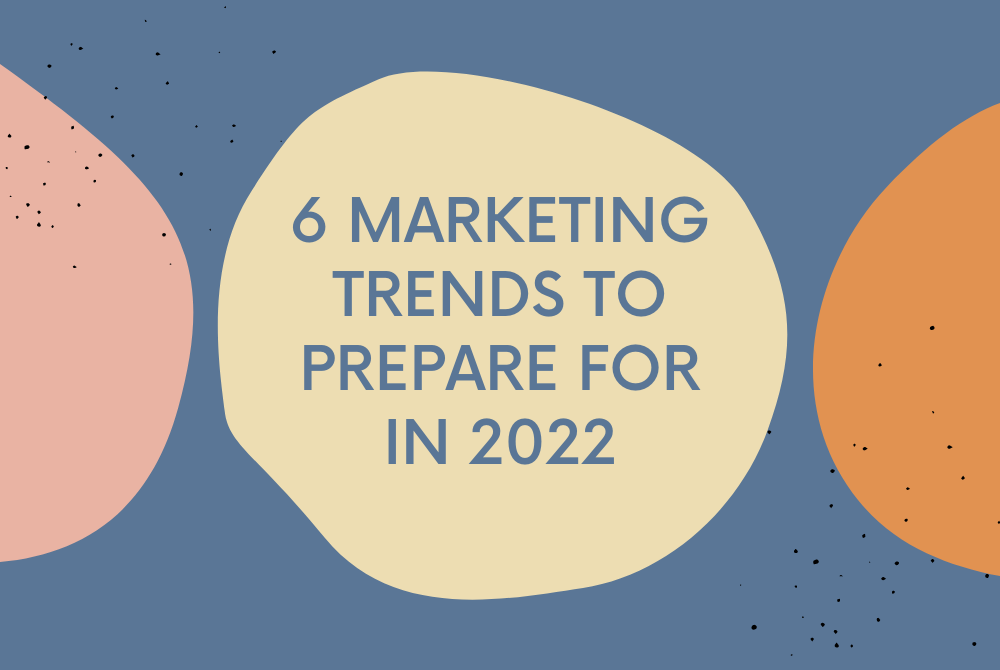
You can’t go through a year-long (and counting) worldwide epidemic without expecting certain things to alter. Marketers and change aren’t exactly strangers, though. The Marketers have always worked in an environment where consumer tastes are always changing and they must adapt. Marketers have done so in spades in the last year, with in-person events being abruptly halted, a significant shift toward digital marketing, and — for many — lower budgets.
As the economy improves, numerous marketers will end up with more cash to spend. But how should they spend them and where should they spend them? Will people long for a return to the old routine, or will they stick to the habits they’ve acquired over the past year? Which messages will resonate with the post-pandemic consumer, and through which channels will they be reached?
As the marketing world looks to the future, here are some trends to watch in 2022:
1. Future Events Will Be Hybrid
Marketers faced the cancellation of all kinds of in-person events, from store grand openings to big-ticket concert series, as the epidemic prompted closures and social distance restrictions. Virtual events took their position as a wrap for engaging with customers and leads. Increased investment in social media and other digital platforms contributed to the success of these events.
Consumers — and the marketers who market to them — are now torn between two opposing urges. Certainly, the desire to reassemble is great. Numerous consumers, nonetheless, are satisfied to keep stuff virtual after witnessing the vicinity of live events from the comfort of their couches. You’ll need to create hybrid events to appeal to both audiences. In-person occasions will have a critical computerized part, and technologies like AR and VR can give a vivid encounter to individuals who would prefer not to leave their homes.
2. There Will Never Be a Time When Content Alignment Is More Important
Any company that aspires to dominate its sector must align its public relations, thought leadership, and SEO efforts. Consider this Venn diagram of thought leadership, which demonstrates the significance of overlapping visibility, credibility, and authority. You may easily stand out in your sector if you can align these factors.
That suggests you’ll require some source data on your site just as different properties you own, like online media or kin destinations. Once you’ve established a solid foundation of authority on various topics, you may boost your reputation by incorporating the PR element, which involves others referencing or discussing your content. Finally, make sure people are linking to your content under specific categories that you control… which leads me to my next recommendation.
3. Marketing Firms Will Have a Greater Stake In The Outcome.
More sales and marketing firms are claiming ownership of the products or services they assist in the sale of. This transition makes sense to me because selling someone’s product and bringing in large revenue will boost the company’s value in the long run. You’ll be even more motivated to hit it out of the park if you own a piece of the company. It’s a win-win situation for both parties.
If you’re in sales or marketing, start by determining which items and services will profit from your services. Then figure out which of those organizations will let you use performance indicators to earn ownership as you reach your objectives.
4. Nonprofits will play an important role in marketing strategies.
Consumers are increasingly looking for companies with a mission or that give back in some form. This trend will only grow, and a well-rounded marketing strategy should take advantage of it by collaborating with organizations. This collaboration opportunity has the potential to help you build your business while simultaneously aligning you with significant humanitarian initiatives.
It’s a mutually beneficial arrangement when you can grow your image and reach while additionally supporting a decent aim. However, merely expressing support for a charitable organization should not be the end of your marketing strategy. Product placement, affiliate marketing, percentage of sales donations, and/or corporate sponsorship should all be included. These kinds of relationships, according to nonprofit executive coach Mallory Erickson, can help you reach a new audience all across the world.
5. Artificial Intelligence (AI) Will Make Influencer Marketing Easier and More Results-Oriented
While many have forecast the demise of influencer marketing, it has yet to happen. The market, which was worth $9.7 billion in 2020, is expected to grow to $15 billion by 2022, with the vast majority of marketers allocating more than 20% of their budget on influencer content. Not that influencer marketing hasn’t evolved over time; one example is the recent shift toward micro-influencers and their more engaged fans.
The broad deployment of artificial intelligence will be the next major development. You can use the technology for everything from influencer identification to performance influencer marketing (AI can watch and assess millions of influencer videos in ways that humans can’t). You only pay for conversions and sales influencers in this approach, which is powered by predictive AI. Return on investment is virtually guaranteed.
6. Alternatives to Third-Party Cookies Will Be Found by Marketers
Another projected death, that of the third-party cookie, has been postponed thanks to Google’s recent revelation (until 2023). In any case, while the postpone implies that marketers’ need to detach themselves from 3P targets based on focusing on methodologies has become somewhat less earnest, it is no less basic. Users are requesting more prominent security insurances and power over their information, and marketers should change.
You could start by expanding your endeavors to assemble and completely take advantage of first-party information – all things considered, first-party cookies aren’t going anyplace. Or then again you can utilize apparatuses like Google’s Privacy Sandbox or FLoC (Federated Learning of Cohorts) to accomplish personalization and buyer focusing without barging in on client protection. In any case, CRM apparatuses, overviews, and intelligent substance will turn out to be progressively instrumental to marketing achievement.
As brands strive for buyer focus on these still dubious occasions, marketers will end up in a natural job: change specialist. By considering these six points, you’ll have the option to remain on the curve.
Follow us on Instagram.
For more, Contact Us.
About us and this blog
We are a digital marketing company with a focus on helping our customers achieve great results across several key areas.
Request a free quote
We offer professional SEO services that help websites increase their organic search score drastically in order to compete for the highest rankings even when it comes to highly competitive keywords.
Subscribe to our newsletter!
More from our blog
See all postsRecent Posts
- How do Brands Use WhatsApp for Marketing? April 27, 2022
- How to Build a Winning WhatsApp Marketing Strategy? April 27, 2022
- WhatsApp Marketing: A New Way To Engage Your Customers! April 7, 2022




Pingback: 6 Marketing Trends to Prepare for in 2022 | Dig...